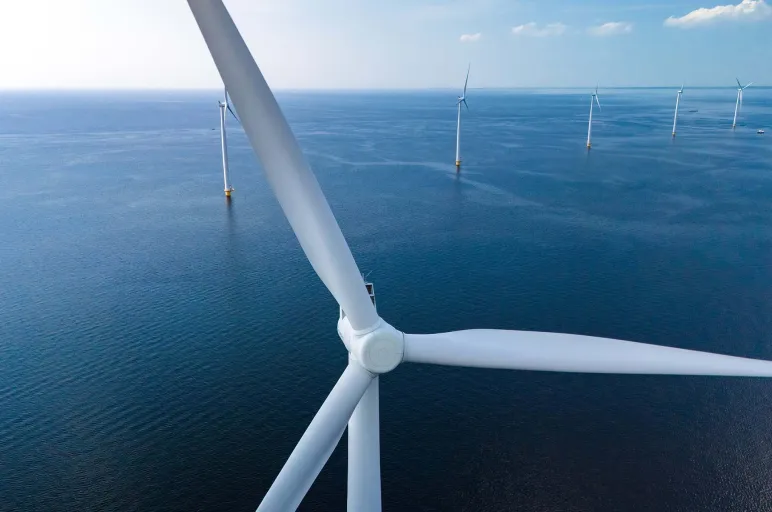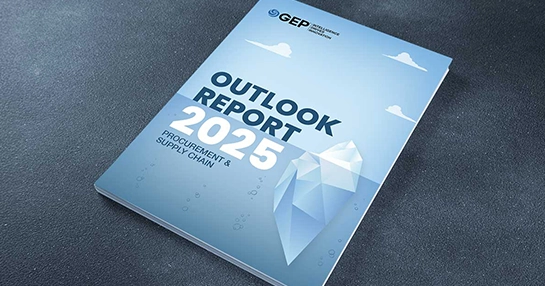
The Role of AI in Energy Procurement: Transforming the Industry
- AI helps you make faster, smarter energy decisions.
- You can start small and still see big results.
- It’s not just about saving time—it’s about gaining an edge.
October 06, 2025 | Procurement Strategy 5 minutes read
If you’re still managing energy procurement with spreadsheets and static contracts, you’re already behind.
Markets are more volatile. Energy costs swing without warning. And sustainability isn’t optional anymore—it’s expected. That’s why leading procurement teams are turning to AI. Not for flashy dashboards, but for real, practical help making better decisions, faster.
From forecasting demand more accurately to optimizing supplier mix and integrating renewables, AI is changing how energy procurement works daily.
Let’s Talk About What AI Can Do for Your Energy Strategy
Smarter sourcing. Lower risk. Cleaner decisions. It starts with the right technology—and the right partner.
In this blog, we’ll break down how AI is being used right now, where it adds the most value, what challenges to expect, and how it could shape your procurement strategy over the next few years.
Let’s get into it.
Understanding Energy Procurement
At its core, energy procurement is about securing the electricity, gas, or renewable energy your business needs to operate. But anyone in the trenches knows—it’s far more complex than just signing a contract at the lowest rate.
You’re managing:
- Price volatility and supply chain risk
- Shifting regulations and regional compliance
- Carbon targets and ESG reporting
- Demand fluctuations across sites or business units
- A fragmented supplier base with different pricing models
All while balancing cost, reliability, and sustainability—and doing it across multiple markets.
Traditional tools just weren’t built for that kind of complexity. AI helps simplify the noise, turning real-time data into real-world decisions.
How AI Is Transforming Energy Procurement
So, what’s different when AI enters the picture? It’s not about replacing your team. It’s about augmenting what they already do—at scale, and with far better timing.
1. From Rearview Mirrors to Real-Time Decisions
Instead of waiting weeks for post-mortem usage reports or market insights, AI taps into real-time consumption, pricing, and weather data to give you up-to-the-minute visibility. It flags unusual usage, identifies pricing trends, and even recommends whether to lock in a contract—or wait.
2. Forecasts That Understand Your Business
AI builds demand forecasts that don’t just look at past usage. They consider production schedules, seasonal peaks, external market signals—even maintenance downtime. That means fewer surprises, fewer rushed decisions, and better alignment with operations.
3. Greener Procurement, Without Guesswork
Sourcing renewable energy can feel like a moving target—generation is variable, storage is expensive, and markets shift quickly. AI helps by:
- Predicting renewable generation capacity
- Modeling storage and grid fallback options
- Calculating carbon intensity per supplier or deal
It brings structure and clarity to something that’s traditionally messy.
Want real-world inspiration on how to apply AI across your procurement function?
Download the whitepaper to explore 101 proven AI use cases—from sourcing and contract management to supplier risk and spend analysis.
Benefits of AI in Energy Procurement
AI isn’t just a nice-to-have. When implemented well, it transforms how your team works, how your contracts perform, and how your procurement function is perceived internally.
| Benefit | How It Shows Up |
|---|---|
| Cost savings | Optimizes timing of buys, suggests load shifting, reduces penalties. |
| Risk management | Forecasts volatility, flags supplier risks, simulates market scenarios |
| ESG accountability | Tracks emissions per contract or supplier, supports carbon reduction goals |
| Efficiency | Automates data collection, speeds up contract comparisons, reduces manual work |
| Strategic impact | Frees your team to focus on value-add activities—not data wrangling |
The biggest takeaway? You stop being reactive—and start leading.
Challenges of Implementing AI in Energy Procurement
That said, adopting AI doesn’t happen overnight. There are real hurdles to address:
1. Messy Data
If your usage data lives in 10 spreadsheets, your contracts are PDFs in a shared drive, and you’ve got no centralized view—AI won’t work properly. Clean, consistent data is step one. Many companies underestimate how big this task can be.
2. Team Buy-In
AI can feel threatening. It helps to position it as a co-pilot, not a replacement. Start with a single use case—like identifying energy waste at one site—and use it to build trust.
3. Compliance & Transparency
Energy regulations vary by region, and your AI tools need to reflect that. Choose solutions that come with built-in audit trails, support Scope 2/3 tracking, and align with your ESG reporting needs.
No, it’s not plug-and-play—but it’s definitely worth the effort.
Types of AI Relevant to Energy Management
Let’s break down what types of AI are actually powering these changes behind the scenes:
Machine Learning: Pattern Recognition
ML models learn your consumption patterns, flag anomalies, and even detect equipment issues before they become expensive problems.
Example: Noticing an HVAC system that’s running overtime after hours—saving thousands in wasted energy.
Predictive Analytics: Market Intelligence
These models track pricing trends, demand forecasts, policy shifts, and macro events—then recommend when and how to buy.
Example: Spotting that gas prices are set to rise in 10 days and prompting early contract renewal.
Optimization Algorithms: Contract Strategy
This is where the real magic happens. AI evaluates multiple contract types (fixed, flexible, hybrid), renewable mixes, and regional variations—and recommends the most cost-effective, risk-balanced option.
Example: Helping you shift from three separate regional contracts to a consolidated green supply agreement—saving both cost and admin time.
The Future of AI in Energy Procurement
We’re just scratching the surface of what’s possible.
Here’s where things are heading:
- Self-adjusting contracts that flex with demand and pricing
- AI-driven energy auctions, where suppliers are selected based on real-time ESG scores and reliability
- Automated load balancing between on-site renewables, grid power, and storage
- Procurement decisions tied to emissions first, cost second, with clear ROI models attached to sustainability efforts
- AI won’t just help you react faster. It will help you plan smarter, act earlier, and prove impact more clearly to the business.
Conclusion
The role of AI in energy procurement isn’t theoretical anymore. It’s tangible. It’s operational. And it’s already delivering value to procurement teams that know how to use it.
It helps you do more than just buy energy—it helps you:
- Predict change before it happens
- Deliver against sustainability goals
- Maximize supplier value
- Free up time for true strategic work
If you’re serious about transforming your procurement function, AI isn’t something to “watch.” It’s something to start using—now.
Ready to explore what that looks like for your organization?
Check out GEP’s Energy Procurement Services & Solutions to see how we’re helping companies use AI to unlock real energy intelligence.
FAQs
What is the role of artificial intelligence in energy efficiency?
AI continuously monitors energy usage and adjusts systems in real time—automating lighting, HVAC, or load shifting to reduce waste. It ensures you're not using more than you need, especially during peak times.
What is the role of AI in optimizing energy systems?
AI keeps your systems running efficiently. It identifies inefficiencies, schedules maintenance before failures, optimizes when to draw from storage or the grid, and reduces overall operational costs and emissions.
Here’s a clean, conversion-ready ending section for your blog, with a header, subhead, CTA, and contact link—all in line with your tone and GEP’s brand voice:
Can AI help with renewable energy procurement?
Yes. AI forecasts renewable generation, balances load, evaluates supplier risk, and automates compliance tracking for RECs and carbon reporting. It makes renewables easier to plan around—not harder.



